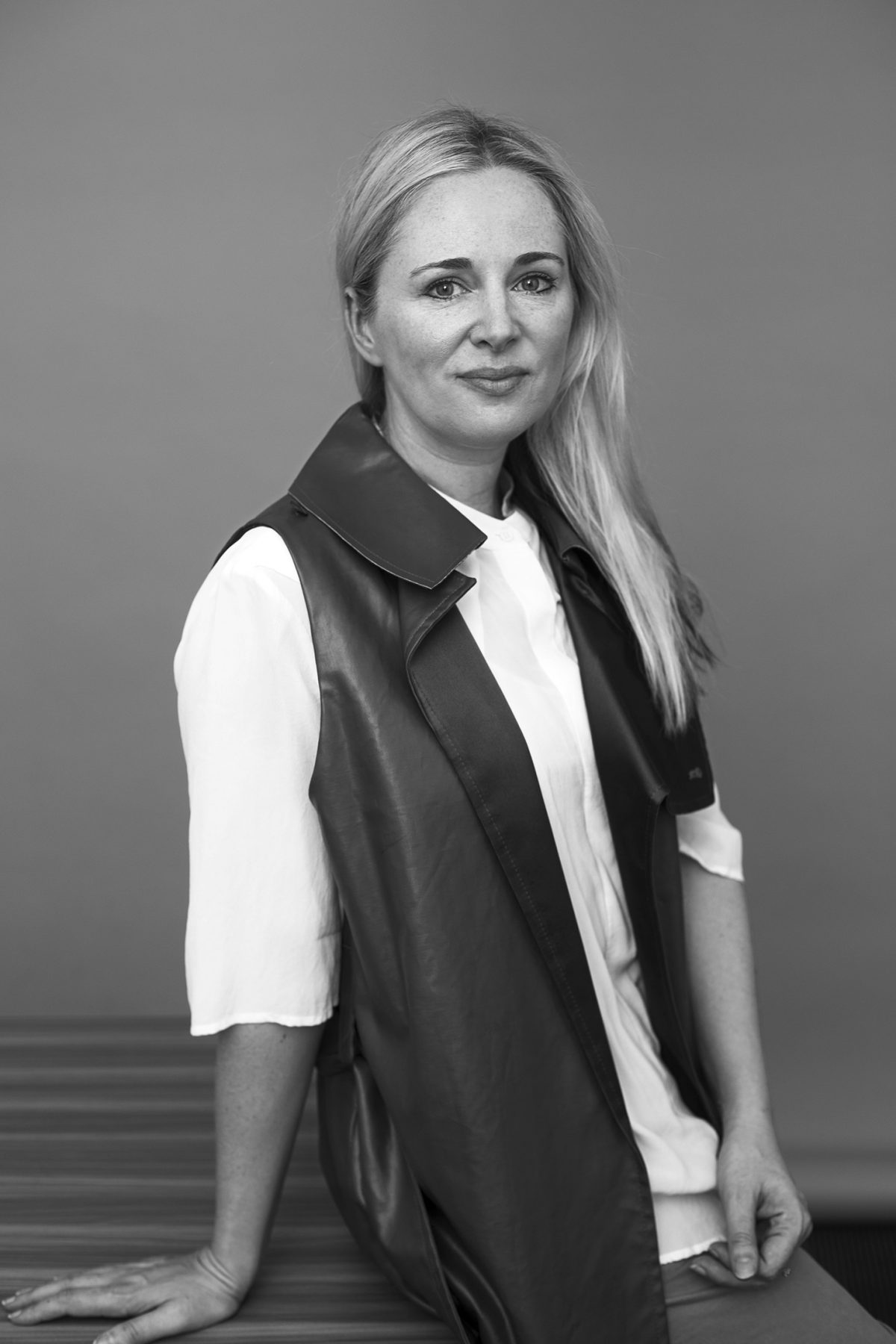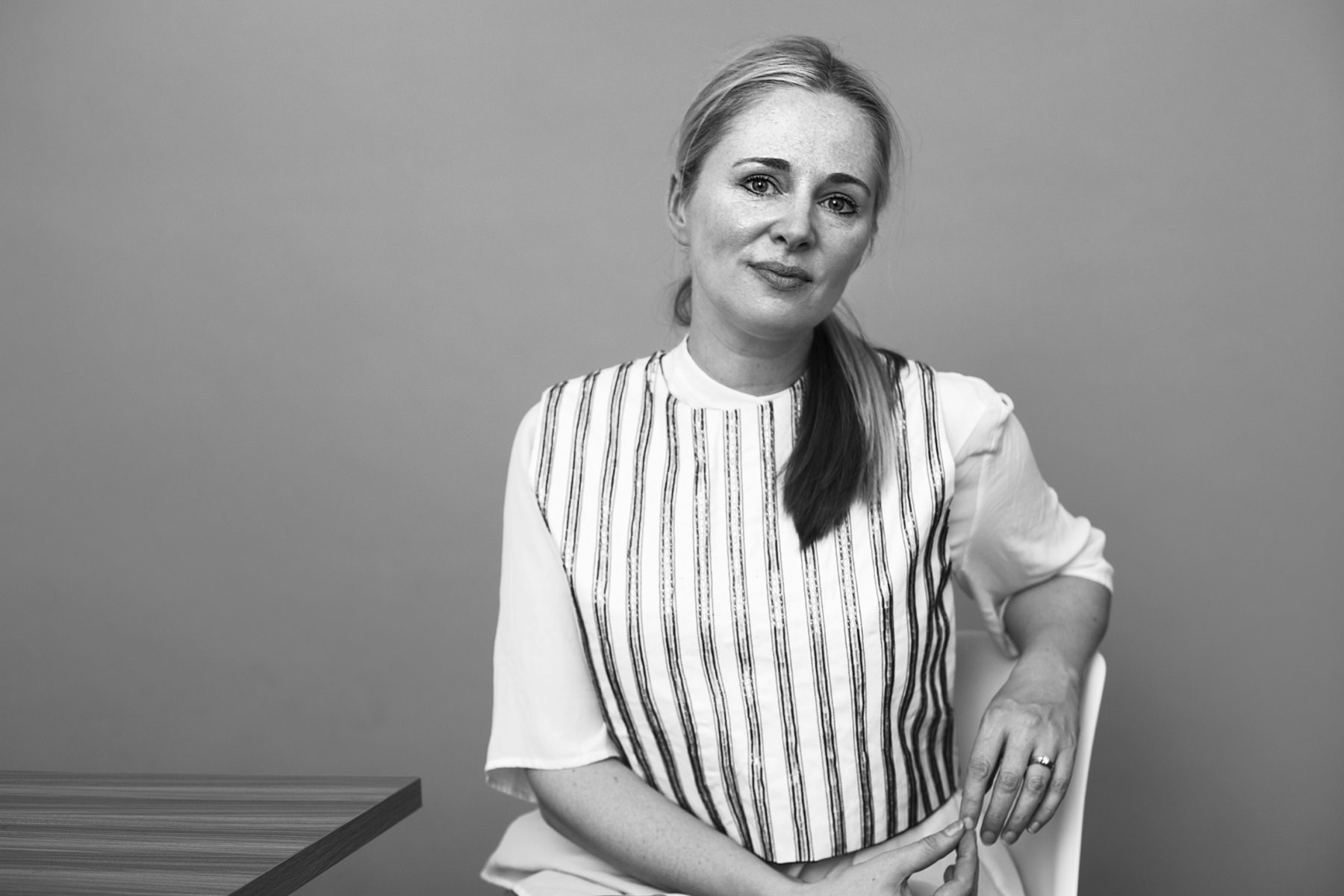
Profile
Clare Press
Clare is Vogue Australia’s sustainability editor and author of 'Wardrobe Crisis, How We Went From Sunday Best to Fast Fashion' and ‘Rise and Resist, How to Change the World’.
Intent is interested in the psychology of fashion and people’s relationships with clothing. How would you describe your own relationship with clothing; has it evolved over the years?
I was a kid when I first worked out that you can communicate through your clothes, and change your persona through them. We had a dress-up box, and my mother and grandmother loved fashion, so there were many opportunities for sartorial role-playing.
My school friends and I would get dressed up in elaborate outfits based on rambling narratives: we’d spend hours trying to look like Madonna or Debbie Harry, or a French aristocrat about to be guillotined. Or a businessman in my dad’s suit and shoes—we used to steal them from his wardrobe, draw on fake moustaches and try to get served in the pub. Clothes to us meant fun, games, silliness, self-expression.
Op shops were a great source of material. We were into DIY, setting upon clothes and accessories with scissors and safety pins and a hot glue gun. That was pretty much all we did for years: make stuff to wear, beg my mother (who is amazing at sewing) to whip us things up on the machine, put together outfits, pretend to be characters.
As a teenager I was excited by the idea that you can influence how the world sees you through what you wear. That’s why I’m into fashion as an adult—for its transformative powers, visual thrills and storytelling properties.
Fashion and fun are deeply linked in my mind. In this context, the cold hard facts of the fashion industry’s brutality are all the more jarring. It’s this tension, I think, that powers my writing about sustainability and ethical fashion today. The idea that something so enjoyable can have such a dark side.
What led you to start exploring the fashion system, and what has changed since you first began this journey?
I’ve been a fashion journalist for twenty years and that, for me, has always been about unpicking and explaining the fashion system, as well as placing clothes in context—fashion is a cultural barometer of our times.
I’ve certainly written my fair share of fashion news stories about the latest ‘It’ bag or designer collaboration, but I’ve always been interested in what underpins that: how the industry works, what it means—ultimately, what it’s for. A decade ago I used to write fashion essays for The Monthly on things like the evolution of the Aussie fashion industry and the value of eccentricity.
But I have shifted my focus onto sustainability, circularity and ethical fashion. The more you learn, the more you want to change the system.
How have your personal values shaped your work?
I was an idealistic young person. I studied politics at university and wanted to change the world. Then life got in the way, while I established myself in magazines. I’m not saying I didn’t give a shit about, say, the environment—because I have always cared about that—just that I didn’t make it my professional focus. Maybe I felt more able to ignore it.
Now I’m highly focused on using my voice to start conversations around sustainability and ethics in the fashion industry. Partly it’s to do with getting older. It helps to have some authority—hopefully I’ve earned some of that today, if only by virtue of being around so long.
Clare Press
“The more you learn, the more you want to change the system.”

What does the Slow Fashion movement mean to you?
It’s polarising; some people find it too simplistic a term. I do like that phrase because it’s beautiful and expressive, it makes me think of slow dancing and the slow food movement, of taking your time to find your way and let the creativity flow, or dreaming and meandering.
Slow fashion is the obvious antidote to fast, or ‘disposable’, fashion. It’s about garments and accessories that were built to last, and have been designed and produced at a reasonable, thoughtful pace.
We know this idea is resonating with designers who risk meltdown over fashion’s relentless demand for more, quicker. People like Demna Gvasalia, who helms Balenciaga and Vetements, have spoken about it. Gucci’s Alessandro Michele has spoken about it. Many inside the industry are aware that it’s careening along at an unsustainable speed, and some stakeholders are trying to find ways to apply the brakes while staying profitable. As a result, we’re seeing brands experiment with reducing the number of collections and fashion shows they present, showing men’s and women’s together, for example. But we need to go further - we need to redesign the old seasonal system entirely.
I am very inspired by Ellen MacArthur and the work being done by her foundation, which advocates for a circular economy. Last year, I was named global ambassador for their Make Fashion Circular Initiative. Once we start to reimagine waste as a resource and rethink take/make/discard, the fashion system will look very different. Most fashion students and young designers I meet are already thinking this way. They know it’s unsustainable to keep making clothes designed to be thrown away after just a few wears, and they are excited by the new gen material choices out there that are gentler on the planet.
In these portraits I’m wearing the work of a Melbourne designer and RMIT graduate, Nessie Croft. With Gabrielle Leavesley, she designs emerging label Coreprêt. They use dead stock, vintage or recycled cloth. This sleeveless trench is made from curtain fabric she sourced in an op shop, and painted with a water-based solvent-free paint that makes it appear leather-like. The bodice is made from the old curtain lining rendered precious with hand-beading done by master craftsmen in Pakistan.
Ethics in fashion can be quite personal and shaped by one’s own values. Has the process of interviewing thought leaders on your Wardrobe Cris podcast helped you develop your own interpretation of ‘ethical fashion’?
Before I started researching the book that spawned the podcast, I knew little about sustainability, the technical side of fabric production, or supply chain issues. It has been a journey of discovery. I’ve learned so much from the people I have interviewed – and hopefully listeners have too. I’m talking about the likes of Cradle to Cradle guru William McDonough, Safia Minney, Livia Firth, Fashion Revolution’s Orsola de Castro, and many wonderful designers. Over time I’ve started to question the usefulness of the term ethical fashion –while sustainability can feel too broad, ethical fashion is not broad enough. In truth all the terms commonly in use have their limitations – eco fashion, responsible fashion etc. It’s the issues that drive them that hold the power. The fashion future we all want, of course, is one that doesn’t require labels. One where unsustainable fashion is exactly that – and everything else is just fashion.
Clare Press
"The fashion future we all want, of course, is one that doesn’t require labels. One where unsustainable fashion is exactly that – and everything else is just fashion."
The business model is such an important key to driving long term change in companies and the way that they operate. Which business models or ways of approaching sustainability do you find particularly interesting and why?
Circularity. I believe it’s design and technology that will save us. We’re at the start of an exciting journey towards new innovations in recycling and closing the loops in textile production. We’ll be hearing a lot more about it. Also, the scope of digital printing to eliminate waste—although the robot revolution obviously raises issues when it comes to workers. Some estimates suggest robots will wipe out half of the world’s existing jobs. What will these redundant workers do to earn a crust in a digitised future economy?
What have been the greatest lessons you have learned during your time working in this space?
That ‘ethical’ is such a broad church. There are many different issues that fall within its remit, from the big stuff like the environment, animal welfare, worker conditions, down to smaller things like the craft of crochet or the process of upcycling a dress. How do you make sense of it all together? It’s a big ask. If there’s a lesson in that, it’s to pick your battles. Focus first on a single thread of this giant conversation, starting with the one that most resonates with you, and try to make change there. Baby steps.
Another big thing I’ve learned is how far we have to go. When you’re operating in this space you meet many inspiring changemakers, and it convinces you that values are shifting. But outside of those circles, I’ve been surprised to discover how many people have no clue about ethical or sustainable fashion. They’re the shoppers we need to engage with. You can’t do that by making them feel guilty. Finger wagging is counter productive. You inspire with positive messaging.
Photography Jasper Kitschke
Production Sigrid McCarthy
Learn more about Clare

